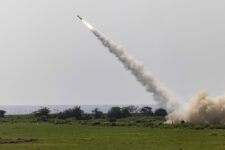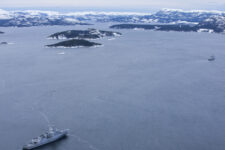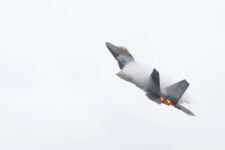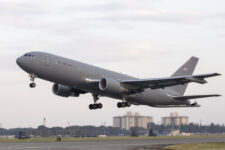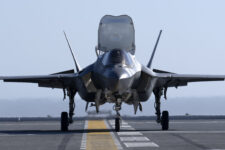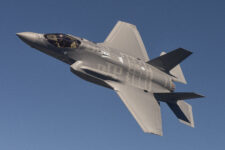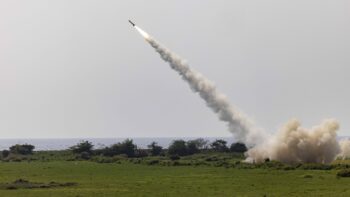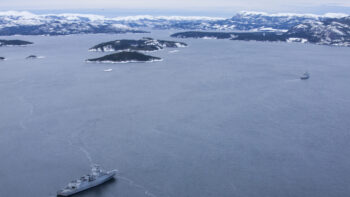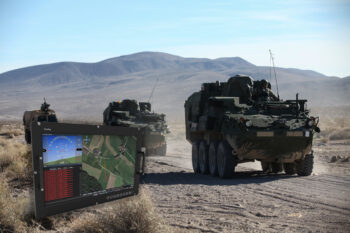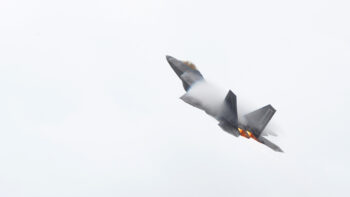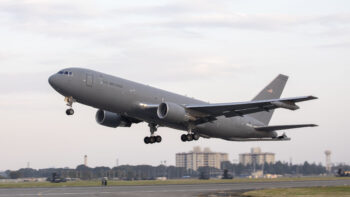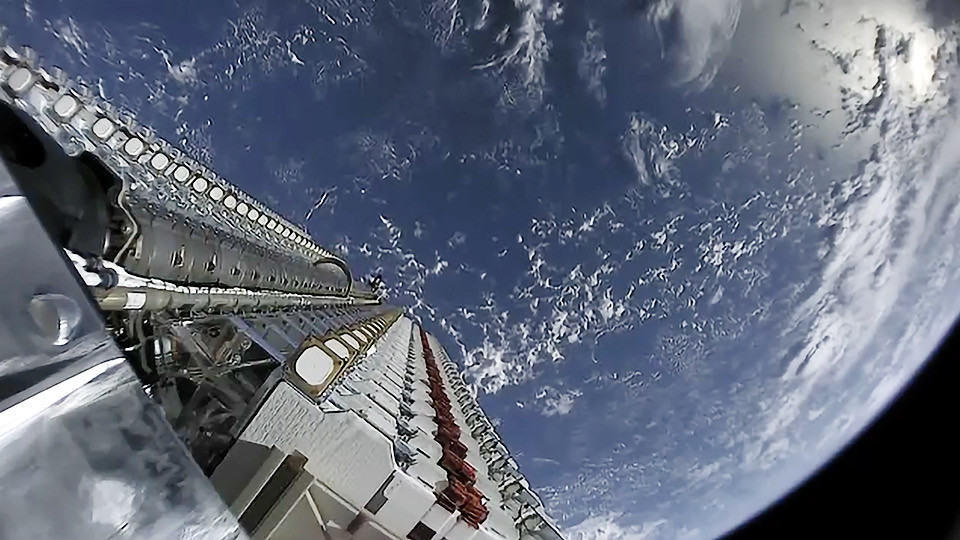
SpaceX’s Starlink satellites
WASHINGTON: The rapid proliferation of commercial satellites for communications and imagery pose a number of risks to US national security — along with the benefits of providing low-cost alternatives to expensive DoD birds, says a new study published today in National Defense University’s Joint Forces Quarterly.
These commercial market trends will “create new challenges as adversaries ranging from Great Power competitors to hostile nonstate actors gain cheap access to space capabilities and the emergence of space-based Internet reshapes the cyber battlespace,” the article states.
And while much of the commercial industry build-up is in the United States, the article warns that both Russia and China also have commercial efforts that could post threats. “The development of foreign proliferated constellations will allow not only their owners to access these capabilities, but potentially access also to a wider range of actors.”
The increase in the availability of satellite imagery and communications bandwidth will bring benefits to US forces operating across the ground, maritime, and air domains, according to the article, authored by two researchers from the Institute of Defense Analyses (IDA). Commercial firms now can offer “new capabilities that can address hard problems facing the U.S. military, such as tracking mobile targets, operating in the Arctic, or providing resilient space support in the face of growing counterspace threats,” it says.
The article, “Proliferated Commercial Satellite Constellations: Implications for National Security,” was penned by Matthew Hallex, an IDA research staffer, and Travis Cottom, an IDA associate researcher. IDA is a non-profit corporation that administers three federally funded research and development centers (FFRDCs): the Systems and Analyses Center (SAC), the Science and Technology Policy Institute (STPI), and the Center for Communications and Computing (C&C).
The authors note that, as Breaking D readers know, some industry experts are convinced the boom is really a bubble similar to earlier satellite market bubbles that eventually burst — suggesting that both long-term fears and the current DoD exuberance about potential benefits may be overblown.
“In addition to potential limits on demand, some industry experts have raised concerns about shortages in investment capital necessary to complete various competing efforts, and other critics have compared the current era to the failures of the large, disaggregated Teledesic constellation and the struggles of Iridium in the 1990s,” the JFQ article states.
On the other hand, Hallex and Cottom point out: “Even if only a handful of proliferated constellation efforts succeed, it will produce both a paradigm shift in how space services are provided and a substantial growth in the number of satellites on orbit.”
According to the study, communications mega-constellations in Low Earth Orbit (LEO) “aim to provide high bandwidth, low latency communications competitive with terrestrial broadband communications.” This, the authors assert, “will not only allow satellite communications to compete for long-distance backhaul and mobile users but also address underserved populations.”
Indeed, many LEO communications providers — particularly those seeking to provide Internet services, such as SpaceX with its massive Starlink constellation — have stated in their business plans the goal of bridging the digital divide.
Mega-constellations could allow developing countries to avoid laying expensive, and sometimes difficult to install, fiber-optic cable, the article says, “in the same way the proliferation of cellular phone technology provided communications without the need to build phone lines in the developing world.” The authors further note that populations in high-latitude areas, such as Alaska, northern Canada, Scandinavia, and Russia, could also benefit because they are outside the coverage ares of typical communications satellites in the higher Geosynchronous Orbit (GEO, some 36,000 kilometers in altitude.)

Joint Forces Quarterly 97, April 2020
As for commercial Earth imaging ventures, the study notes that in the United States the market for imagery and services remains small, and is dominated by clients such as the military, the Intelligence Community and the National Oceanic and Atmospheric Administration (NOAA).
“The U.S. Government has been the largest and most stable customer for commercial satellite imagery, including resources from new imagery proliferated constellations. For instance, a significant share of Planet’s growth has been through multiple contracts with the National Geospatial-Intelligence Agency,” the report finds.
At the same time, Hallex and Cottom say, operators have been aggressively seeking to broaden the customer base to nontraditional arenas such as “industrial monitoring, agriculture, utilities, marine transportation analytics, insurance, resource management, business intelligence, and other data-driven, decision-making practices.”
Finally, the study notes that the upward trend in commercial satellite capabilities is not limited to the US. In particular, the authors detail efforts by Chinese firms — which are nominally private but are controlled by the government — to sell communications and Earth observation services in Africa, Latin America and Central Asia.
“Given China’s willingness to allow for commercial dealings with countries hostile to the United States, these systems could pose a significant threat to U.S. interests,” the article says.
While Russia too is looking to move into the proliferated LEO constellation market via its national space agency, Roskosmos, Hallex and Cottom say that Moscow presents less of a concern due to the shaky state of its civil and commercial space sector.
‘Everybody’s going to have to figure this out’: Army, Air Force debate base defense amid new threats
Air Force Secretary Frank Kendall recently suggested his service could take over the task of defending its air bases from the Army, as long as adequate funding was provided.
